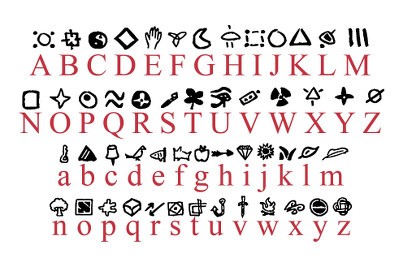At last! Jordan Himelfarb of the Toronto Star has managed to crack the mystery of the Weldon Ciphers, with nothing more than a well-judged bit of social probing.
Online forum member “+Myst0wn” had cleverly unearthed the owner’s page for the mysterious blog “000xyz.blog.ca” referenced on the back of each envelope. Jordan thought about the owner’s name (“Sculpture 2.0”), and decided it must be something to do with “social sculpture”, a kind of art that is defined by people’s reactions to encountering something unusual.
But how was he/she connected to Western University? Jordan found an art instructor there called Kelly Jazvac whose art interests seemed fairly similar: and it turned out, after some to-ing and fro-ing, that Jazvac had taught the (still unnamed) “Sculpture 2.0”.
“She explained that the Weldon code was an art project that came out of a second-year sculpture and installation class she taught in 2012. The artist, then an undergraduate student, placed 121 letters in the Weldon stacks and moved on with her or his (but probably her) life. Jazvac told me the artist was shocked by the project’s recent fame and wished to remain anonymous lest she be treated unkindly in the media. (The artist later declined my offer, via Jazvac, for an interview under the condition of anonymity.)“
So it was, after all, simply a puzzle-like thing composed of 26 upper case and 26 lower case letters in a hand-built font (one that the artist christened “Sculpture 2.0”), but with a meaningless plaintext, and left abandoned in the stacks at Weldon. A thing of oddness and careful beauty, defined more by people’s collective reactions to it than its actual internal content.

Bugger I thought I was on to a good one LOL
It seems to end like it started : how appropriate 🙂
George: I hate being proved right, it just gets people annoyed. 😐
Although I was hoping it was a real cipher, I suspected it was either a hoax or meaningless because of the first 17 letters not repeating. This might happen once but for it to happen 3 times on 3 different notes was pretty unlikely; even a polyalphabetic cipher would show some repeats.
This is not to say I didn’t bust my butt trying to solve it. I created the 52 character font and used it to chart all 3 frequency distributions, did all the standard crypto tests and even ran stats on each note comparing it to the others. Excel got a serious workout.
Good fun nonetheless, as I had put crypto aside for awhile in favour of lock picking – a very similar addiction. Maybe I’ll dig out my Dorabella work and bang my head against that for a bit.
Thanks for the update. Interesting that the lfpress story seems to indicate that actually Jordan Himelfarb is the art teacher Kelly Jazvac’s brother?! That would have significantly helped with the sleuthing, and would explain why he himself wrote it up as such a dramatically enhanced story.
I too enjoyed the sleuthing, and am glad to have some resolution.
Kudos to MystOwn too!
So, just another form of jabberwocky? Heh!
Well well…the first sixteen characters of the first Moustier cryptogram are non-repeating too. Now there’s a (nearly) coincidence…
SirHubert: it is certainly an interesting coincidence…
The reason the Weldon
CiphersNotes looked suspicious to my eyes was that the letter-to-letter contacts seemed unstructured (which would normally point either to modern machine cryptography or to transposition ciphers), yet I was pretty sure that I could eliminate both machine cryptography (too whimsical, and the instance frequency counts weren’t quite flat enough) and transposition (specifically because of an insertion in Note #20, which I found out about only in the last couple of days). Which didn’t really leave a lot of anything else to try.Perhaps it would be worth going back to the Moustier cryptogram with that experience under one’s belt, to see what we would now think of it, hmmm?
the documents portray an existent universal language , one especially loved by sensible children .
I don’t think he’s her brother… no evidence to suggest that anywhere.